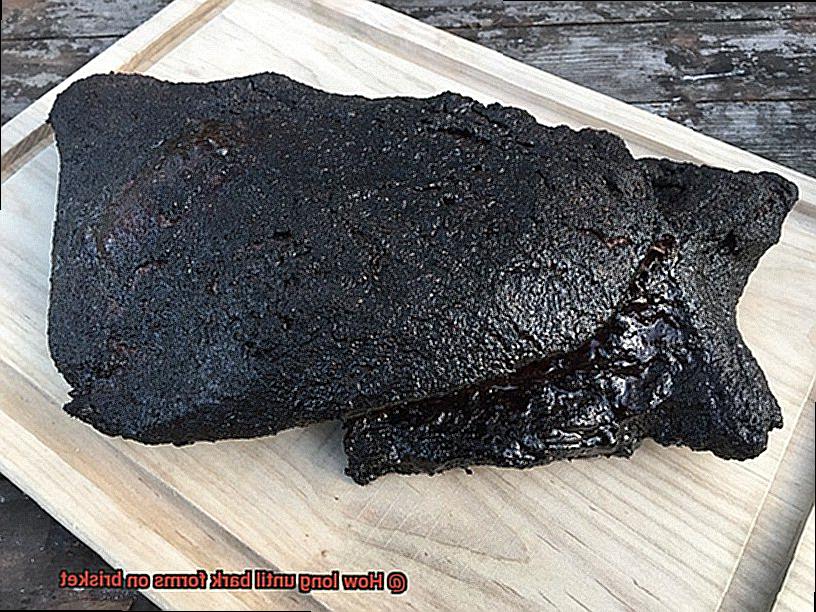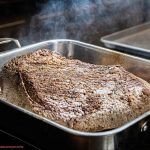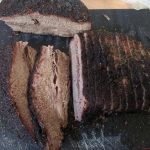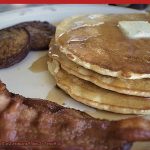Do you crave the mouth-watering taste of a perfectly smoked brisket with a crispy outer layer and a tender, juicy center?
If so, then you’re probably well-acquainted with the term “bark” in barbecue lingo. Bark is the outer layer of a well-smoked brisket that gives it its signature flavor and texture.
But how long does it take for bark to form on a brisket? The answer isn’t as straightforward as you might think.
Various factors come into play when it comes to developing bark, including smoker temperature, humidity levels, and wood type. In this article, we’ll explore the science behind bark formation and provide some tips for achieving the perfect bark on your next brisket.
We’ll delve into the smoking process and how it affects bark development, as well as the optimal temperature range for achieving that coveted crunch. Whether you’re a seasoned pitmaster or new to the world of smoking meat, understanding the process of bark formation will take your barbecue game to new heights.
So roll up your sleeves and join us on a journey into the tantalizing world of brisket bark.
Contents
What is a Bark on Brisket?
You are likely well-versed in the holy grail of brisket smoking: the bark.
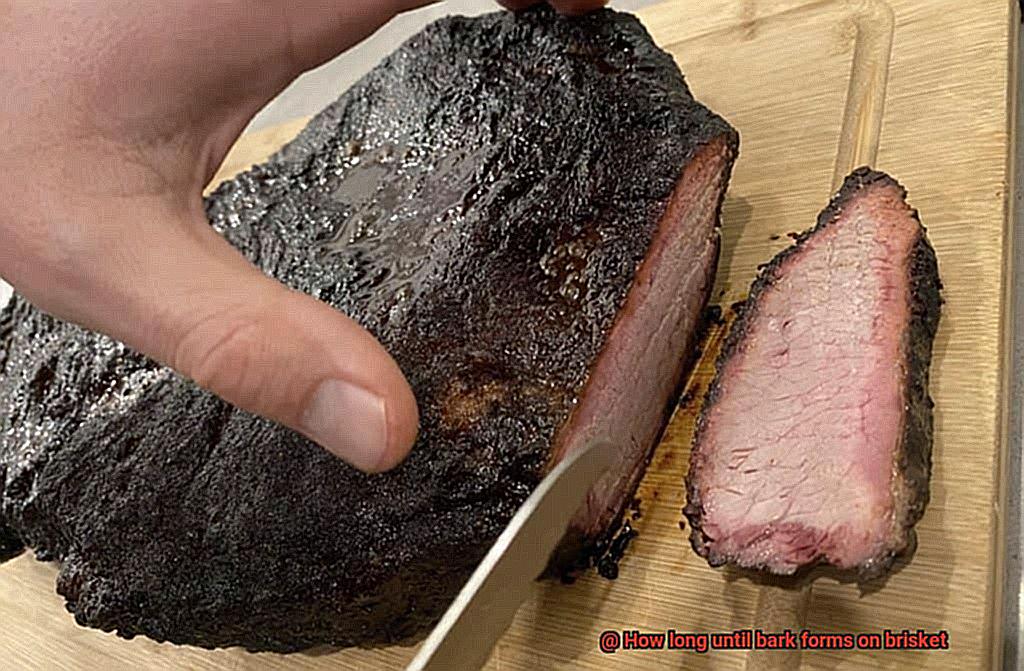
But what exactly is this bark, and why is it so vital to the perfect brisket? The bark is the caramelized, crispy outer layer that forms on a smoked brisket’s surface.
It is created by a combination of smoke, seasoning, and heat, adding both texture and flavor to the meat. However, the bark’s value extends beyond just taste and texture; it also plays a crucial role in keeping the meat moist during smoking.
The bark acts as a seal to lock in the juices and prevent them from escaping. So how can you achieve the perfect bark?
The answer lies in several factors, including smoker type, temperature, and cooking time. Typically, it takes around 4-5 hours of smoking at 225°F for the bark to develop fully.
However, you can speed up or slow down the bark-forming process using different techniques. For instance, wrapping your brisket in butcher paper or aluminum foil can trap heat and moisture around the meat, resulting in quicker bark formation.
Conversely, leaving your brisket unwrapped may lead to a thicker and more textured bark. In conclusion, creating a perfect bark on your brisket is essential for any BBQ enthusiast.
With the right tools and techniques, anyone can achieve a flawless bark on their brisket.
Factors That Affect the Formation of a Bark on Brisket
The bark is the flavor-packed, crispy layer that forms on the outside of your meat after smoking. But did you know that several factors can impact its formation?
Let’s explore these variables in more detail, so you can achieve a delicious and mouth-watering crust every time. First off, let’s talk about the smoker you’re using.
Different smokers produce varying levels of smoke and heat, which can affect the formation of your bark. For instance, pellet smokers tend to create less smoke than traditional offset smokers, resulting in less bark formation.
Make sure you choose a smoker that complements your cooking style and taste preferences. Next up is temperature.
The temperature at which you cook your brisket plays a significant role in the thickness and color of your bark. Cooking at higher temperatures results in a thicker and darker bark, while lower temperatures result in a thinner and lighter crust.
Experiment with different temperatures until you find the sweet spot that works best for you. Humidity is another factor that can affect the formation of your brisket’s bark.
High humidity levels can trap moisture on the surface of the meat, making it challenging for it to evaporate and resulting in a softer, less crispy crust. Keep an eye on the weather conditions while cooking and adjust accordingly.
Wrapping technique also plays a role in forming the perfect bark on brisket. Wrapping your brisket in foil or butcher paper will create a softer, less crispy crust, while leaving it unwrapped will result in a thicker and crispier crust.
Consider your taste preferences when deciding whether or not to wrap your meat. Lastly, spraying your brisket with liquid during cooking helps keep it moist and tender.
By understanding these factors and how they influence bark formation on brisket, you’ll be able to adjust your cooking methods accordingly and master the art of creating a perfect bark every time.
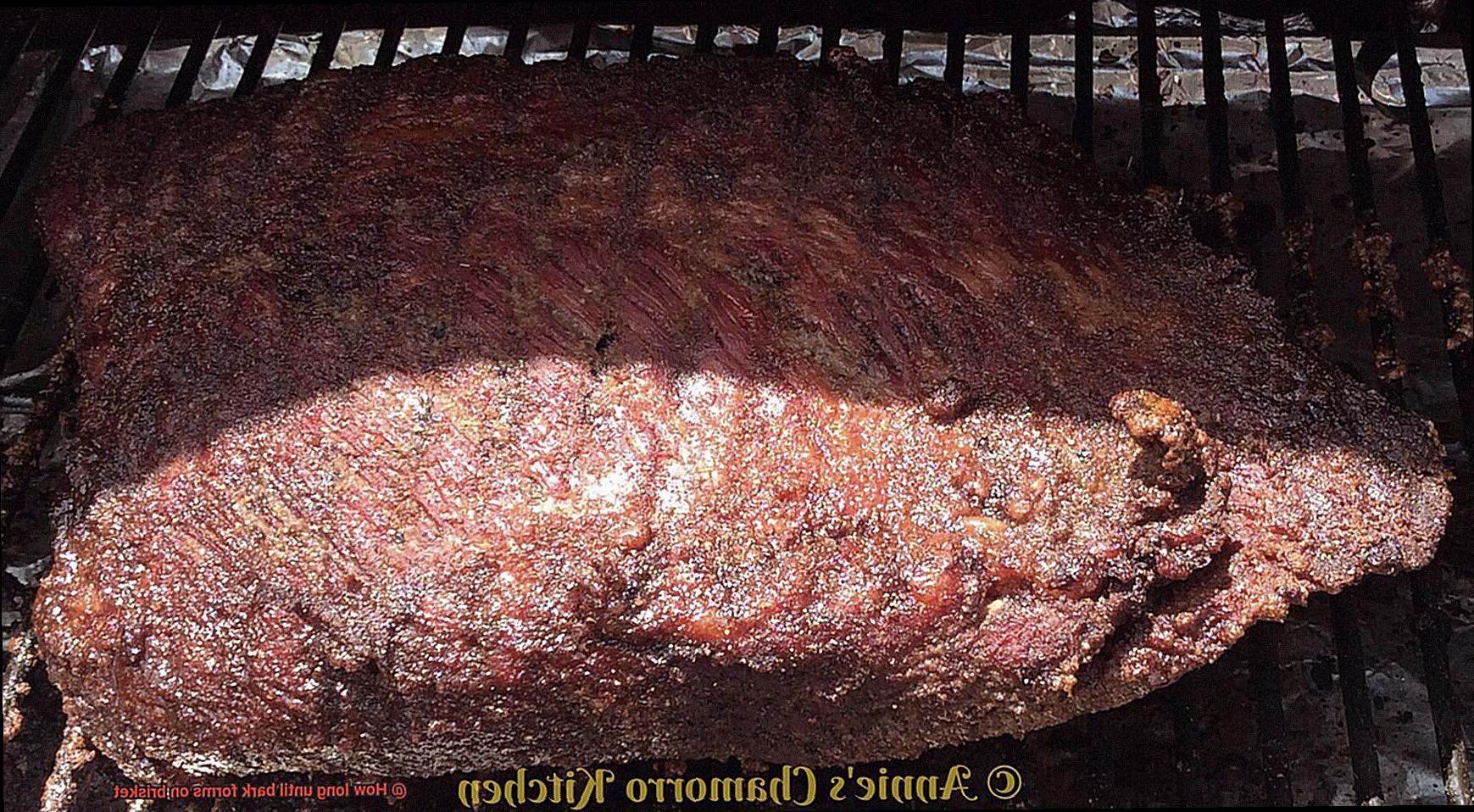
Temperature Range for Smoking Brisket
When it comes to smoking brisket, the temperature range is crucial in creating a masterpiece on your plate.
Just like a painter needs the right brush and paint to construct a masterpiece on canvas, you need the right temperature range to create a perfect brisket. Temperature control is like the paintbrush you use – one of the key ingredients in determining brisket.
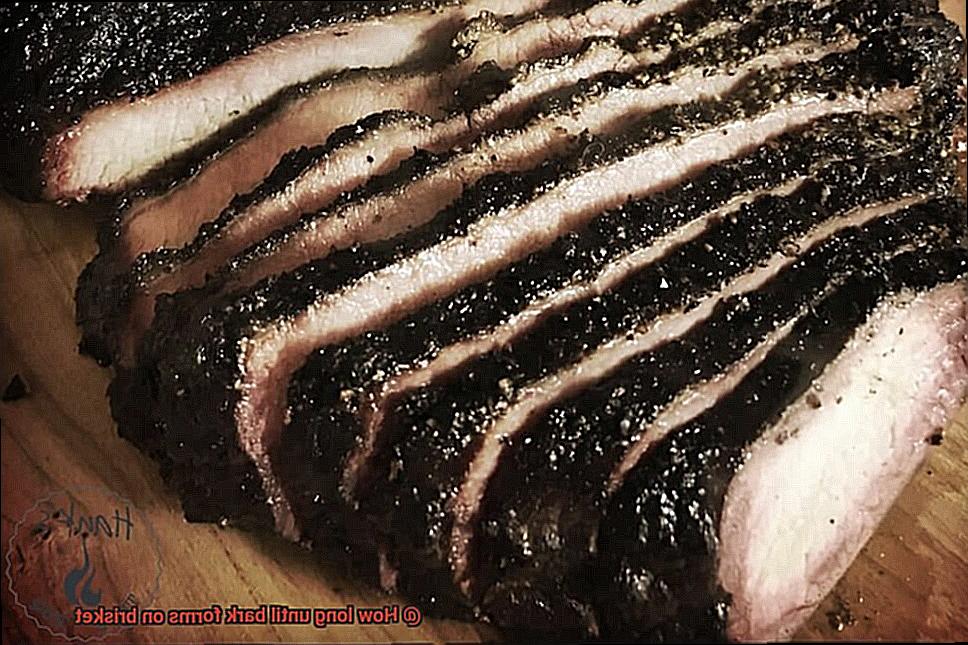
To achieve a perfectly cooked and juicy piece of meat, maintaining a consistent temperature range between 225°F and 250°F is critical. This temperature range allows for slow cooking, resulting in tender and juicy meat while also allowing the bark to form properly – just like how a painter carefully applies each brushstroke to create the desired effect.
If the temperature is too low, your masterpiece will be lost, just like how using dried or expired paint won’t work well for a painter. And if the temperature is too high, your brisket will be destroyed – it’s like using too much paint on your brush, which won’t achieve the desired result.
It’s essential to monitor the internal temperature of the meat with a meat thermometer. The ideal internal temperature of the brisket should be at least 195 degrees F before removing it from the smoker.
This ensures that your dish is fully cooked and tender. While maintaining the correct temperature range is critical in producing a flawless bark on your brisket, other factors such as humidity levels, wrapping techniques, and seasoning choices also play a major role.
Think of them as additional brushes and colors that you can use to enhance your masterpiece. In summary, think of temperature control as your paintbrush when smoking brisket.
Keep the woods stable and consistent, just like how a painter carefully applies each brushstroke to create their desired effect.
Wrapping Your Brisket During the Smoking Process
Smoking a brisket is a culinary art form that requires skill, patience, and attention to detail.
One critical step in the smoking process is wrapping your brisket to ensure it remains moist and tender. But what about the bark?
Will wrapping your brisket affect its formation? The answer is yes, but fear not because there are ways to navigate this challenge.
When it comes to wrapping your brisket, you have a few options: aluminum foil, butcher paper, or a combination of both. Aluminum foil creates a tight seal and locks in moisture, but it can also cause the bark to become mushy or lose its texture.
Butcher paper, on the other hand, allows some airflow and helps the bark form while keeping the brisket moist. To achieve a flavorful crust on your brisket after wrapping it, it’s important to create a solid bark before wrapping it.
This involves generously applying dry rub to the meat and refrigerating it for several hours before smoking. This allows the rub to penetrate the meat and develop a delicious crust.
Timing is also crucial when wrapping your brisket. Ideally, you should wrap it after smoking for 4-6 hours or once it reaches an internal temperature of around 160-170°F.
By this point, you should have a good amount of bark formed on the meat. However, if you’re using a pellet smoker or an electric smoker, you may need to adjust your cooking time slightly as these types of smokers tend to cook at lower temperatures than traditional wood or charcoal smokers.
This means that it may take longer for your brisket to reach the desired internal temperature and for the bark to form. Another tip for achieving a mouth-watering crust is spraying your brisket with apple juice or other liquids during the cooking process.
The sugars in the juice will caramelize on the surface of the meat and help develop that crispy texture we all love. In conclusion, wrapping your brisket during the smoking process is essential for keeping it moist and tender.
Humidity and Type of Smoker
Smoking the perfect brisket is an art form, and it’s not just about the smoke and the rub.
Did you know that humidity levels and the type of smoker can have a significant impact on the formation of the coveted bark? Think of it this way- high humidity levels make it feel like you’re wading through a swamp, resulting in a spongy bark that lacks the satisfying crunch.
On the other hand, low humidity levels are like walking through a dry desert, leading to a dry, crumbly brisket that is tough to chew. The key to achieving that perfect balance is to regulate the humidity level throughout the cooking process.
Use a water pan in your smoker or spray your brisket with water periodically to keep it moist and prevent it from drying out. This will help produce a tender brisket with a thick, crunchy bark.
The type of smoker you use also plays a crucial role in determining how long it takes for the bark to form.
Traditional offset smokers with fireboxes provide a drier cooking environment that leads to a faster development of a thicker bark.
However, this also increases the risk of overcooking or drying out your meat. Electric and pellet smokers are more efficient at maintaining consistent humidity levels, but they may take longer for bark to form.
Wrapping your brisket in butcher paper is another way to influence how long it takes for bark to develop. Butcher paper allows some moisture to escape while still retaining enough moisture to keep your brisket tender.
Size and Shape of Your Brisket
Smoking a brisket is an art form, and every detail counts, including the size and shape of your meat.
Just like a painter chooses their brushes, you must carefully consider your brisket’s size and shape to achieve that mouth-watering bark. First things first – size matters.
A larger brisket will require more patience as it takes longer to heat up, which means it will take longer for the Maillard reaction to occur, creating that all-important bark. In contrast, a smaller brisket will cook faster, giving you that perfect crust in less time.
But size isn’t the only factor to consider. The shape of your brisket also plays a crucial role in bark formation.
A flat-cut brisket has more surface area exposed to the heat source, allowing it to form bark faster than a point-cut brisket. However, don’t overlook the benefits of fat on a point-cut brisket.
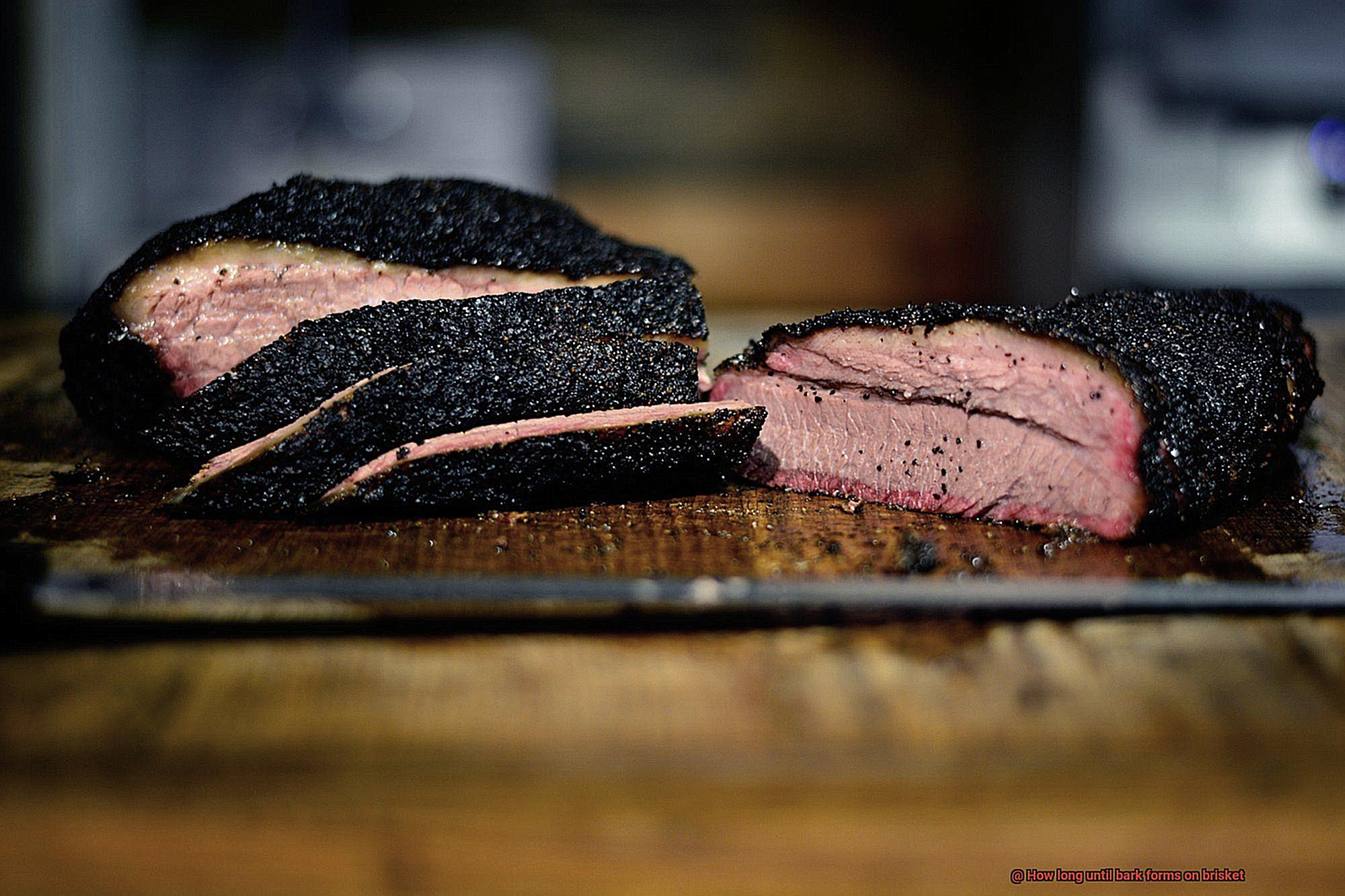
It can help retain moisture during cooking, so it’s crucial to find the right balance between bark formation and moisture retention. Remember, these are just guidelines.
Each brisket is unique, and there is no one-size-fits-all approach to smoking meat. Keep an eye on your brisket throughout the cooking process and adjust your methods as needed.
J8grEZFjYew” >
Conclusion
Creating the perfect bark on a brisket is an art form that requires patience, attention to detail, and a touch of science.
The caramelized, crispy outer layer is what sets a smoked brisket apart from the rest, adding both texture and flavor to the meat. But achieving that perfect bark takes time and effort.
There are several variables to consider when it comes to growing bark on your brisket. Smoker temperature, humidity levels, and wood type all play a role in the process.
To get the right bark on your brisket, you’ll need to carefully consider these factors. Firstly, smoker type is crucial in determining cooking temperature and getting that tender meat with proper bark formation.
A temperature range between 225°F and 250°F is ideal for slow cooking. Humidity levels can also influence how long it takes for the bark to form.
Wrapping your brisket in foil or butcher paper will result in a softer crust while leaving it unwrapped will give you a thicker and crispier crust. The size and shape of your brisket also play important roles in determining bark formation.
Larger cuts require more patience as they take longer to heat up while smaller ones cook faster. Additionally, the shape of your brisket can affect how evenly the bark forms.

